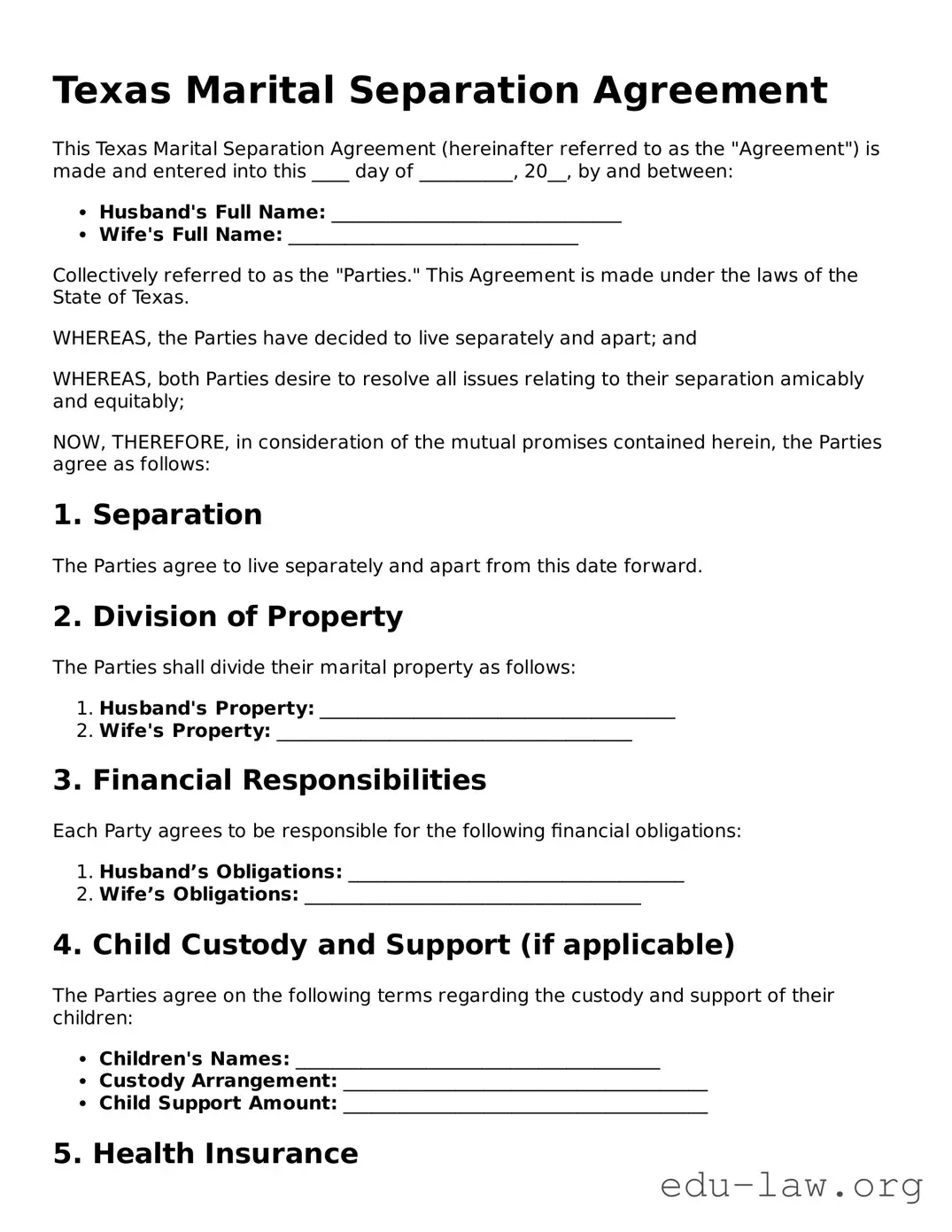What is a Texas Marital Separation Agreement?
A Texas Marital Separation Agreement is a legal document that outlines the rights and responsibilities of spouses who choose to live apart. While it does not legally end a marriage, it lays the groundwork for property division, child custody, and financial support during the separation period. This agreement can also be beneficial if the couple decides to pursue divorce later, as it may simplify the process by addressing key issues upfront.
Is a Marital Separation Agreement required in Texas?
No, a Marital Separation Agreement is not required in Texas. Spouses can separate without creating any formal document. However, having an agreement helps to clarify expectations and responsibilities, reducing the likelihood of misunderstandings or disputes during the separation.
What should be included in a Marital Separation Agreement?
A comprehensive Marital Separation Agreement should address several important areas. These include the division of assets and debts, living arrangements, child custody and support, and spousal support, if applicable. Clearly outlining these issues can prevent conflicts and provide a clearer path forward for both spouses.
Do both spouses need to sign the agreement?
Yes, both spouses must sign the Marital Separation Agreement for it to be valid. This mutual consent indicates that both parties agree to the terms laid out in the document. It is also advisable for each spouse to consider consulting an attorney before signing to ensure their rights are adequately protected.
Can the terms of the agreement be modified later?
Yes, the terms of a Marital Separation Agreement can be modified later, but both spouses must agree to the changes. It is often a good idea to document any modifications in writing. This helps maintain clarity and can prevent disputes down the line.
What happens if one spouse doesn't follow the agreement?
If one spouse fails to adhere to the terms of the Marital Separation Agreement, the other spouse can seek legal recourse. This may involve filing a motion in court to enforce the agreement. Depending on the situation, the court may order compliance or modify the agreement to reflect the current circumstances.
Is a Marital Separation Agreement the same as divorce?
No, a Marital Separation Agreement is distinct from a divorce. While a divorce ends the marriage legally, a separation agreement is designed to manage the couple's affairs while they are still married but living apart. Couples may choose a separation agreement as a stepping stone before deciding whether to pursue a divorce.
How can I ensure my Marital Separation Agreement is enforceable?
To increase the chances that a Marital Separation Agreement is enforceable, it is advisable to ensure that it is written clearly and comprehensively. Additionally, having each spouse consult an attorney can help ensure that both parties understand the implications of the agreement. Full disclosure of assets and debts is also necessary to avoid claims of fraud or coercion later on.
Where can I obtain a Marital Separation Agreement form in Texas?
You can obtain a Marital Separation Agreement form from various sources, such as legal websites, family law offices, or local court clerks. However, using a generic form may require customization to fit your specific circumstances, so consulting with a legal professional can provide additional guidance tailored to your needs.
